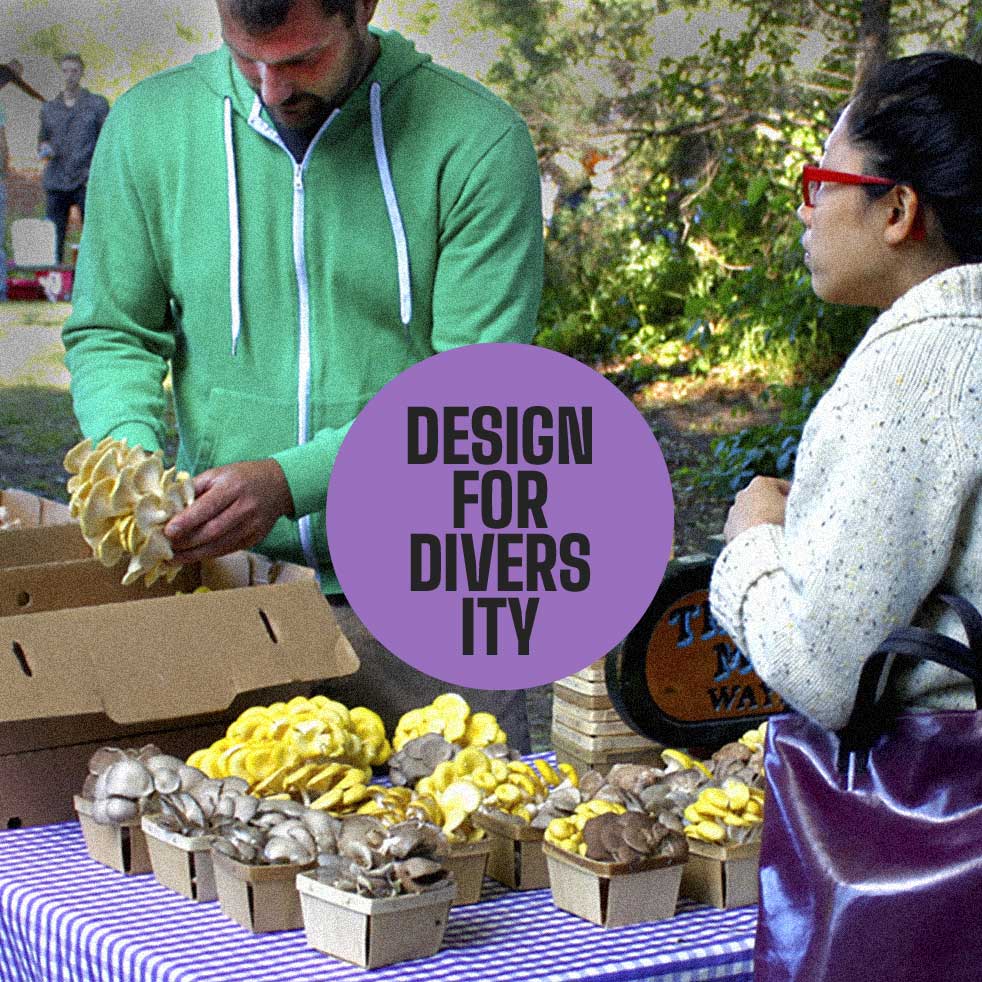
Promote
Universal
Themes
by OpenCity Projects
Photo: Michi McCloskey
By promoting universal themes such as food and nature in public space design, you can create instant appeal among users that can lead to interaction, engagement and cultural acceptance
Universal themes, such as nature, art and food, cut across cultural and linguistic differences and can bring people together in public spaces.
Typically, urban designers focus on defining the physical layout of places and physical amenities based on low cost and easy maintenance. Less thought and planning goes into the user experience — how the space will be used, how it be perceived from the street, how easy is it to navigate, etc. Providing opportunities for interaction is a key ingredient to creating successful intercultural public spaces. It gives people a common purpose to come together, engage in dialogue and learn. When designing for diversity, promoting universal themes can serve as cultural connectors.
Food is primary to human experience and every culture. Meals are often associated with home, family, security and speak intimately to a person’s identity. When eating with others in public space, people actively participate in an activity that transcends culture and identity.
Dufferin Grove Park is located in Toronto’s west end. Although it is historically a Portuguese neighbourhood, there is a rich cultural mix of residents from East and South Asia, Europe and the Middle East. Programming at the park includes affordable Friday night dinners eaten at long, communal tables that facilitate direct interaction through sharing a meal.
R.V. Burgess Park in northeast Toronto is nestled within a densely populated, multicultural residential tower community. One of the park’s unique amenities is an outdoor tandoori oven. Local women work together to make tandoori rotis for sale to local residents and the wider community who visit specifically to taste the fresh bread but stay for the atmosphere, engagement and community feel.
Nature is another universal theme that everyone can share. Access to green spaces and fresh air have been linked to people’s satisfaction with their neighbourhood. Programs that offer an opportunity to engage with nature can also help to unify a community. The Gone Fishing Program offered at the Scadding Court Community Centre is an excellent example of activities that draw people of different cultural backgrounds and ages. Every year in June, the indoor pool is filled with live, freshwater trout. For four dollars, anyone can catch a fish, have it cleaned and take it home or have it cooked at the outdoor market. Gone Fishing brings nature into the city, making a much-loved outdoor experience more accessible.
By promoting universal themes such as food and nature in public space design, you can create instant appeal among users that can lead to interaction, engagement and cultural acceptance.